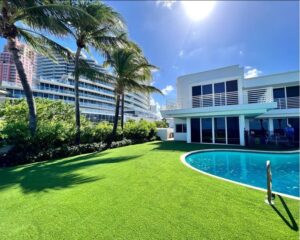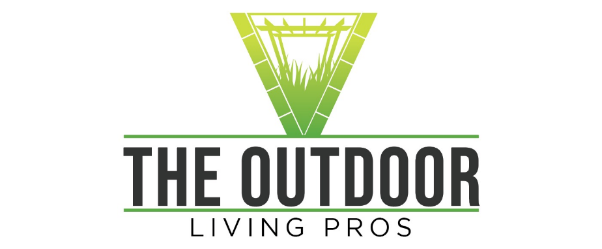Artificial grass has become an attractive option for homeowners seeking a low-maintenance, evergreen lawn. However, in Florida, where the sun shines intensely and temperatures can soar, many people wonder how artificial grass holds up. Let’s delve into the durability, benefits, and considerations of using artificial grass under Florida’s sun.
1. UV Resistance and Durability
UV Stabilization: High-quality artificial grass is manufactured with UV stabilizers to resist the damaging effects of ultraviolet rays. These stabilizers prevent the fibers from fading, ensuring that the grass retains its vibrant green color even after prolonged exposure to the sun.
Material Composition: Artificial grass is typically made from polyethylene, polypropylene, or nylon, all of which are durable materials designed to withstand harsh environmental conditions. These materials are chosen for their resilience and ability to maintain their structural integrity in extreme heat.
Long-Term Performance: With proper installation and maintenance, synthetic turf can last for 15-20 years, even under the intense Florida sun. Its longevity makes it a cost-effective option in the long run, as it doesn’t require the frequent reseeding or replacement needed for natural grass.
2. Heat Management
Heat-Resistant Technology: Some types of artificial grass are engineered with heat-resistant technology to reflect sunlight and reduce surface temperatures. These advanced products are particularly beneficial in hot climates, making the grass cooler to walk on.
Infill Choices: The type of infill used can also impact the temperature of the artificial grass. Options like silica sand or acrylic-coated infills can help dissipate heat more effectively than traditional crumb rubber, keeping the surface cooler.
Cooling Techniques: On extremely hot days, a quick rinse with a garden hose can significantly cool down the artificial grass. This simple method is effective and ensures that the grass remains comfortable for use, even in peak summer.
3. Maintenance in the Sun
Minimal Upkeep: One of the primary advantages of artificial turf is its low maintenance requirements. Unlike natural grass, it doesn’t need regular watering, mowing, or fertilizing, which is particularly advantageous in Florida’s hot and often dry climate.
Cleaning and Care: Routine cleaning involves removing debris and occasionally rinsing the grass to remove dust and pet waste. This minimal upkeep keeps the grass looking fresh and inviting without the intensive labor natural grass demands.
4. Environmental Impact
Water Conservation: Florida often faces water restrictions due to droughts. Artificial grass doesn’t require irrigation, which conserves water and reduces utility bills. This is an eco-friendly solution that aligns with sustainable living practices.
Chemical-Free Lawn: Without the need for pesticides, herbicides, or fertilizers, artificial grass reduces the chemical runoff into Florida’s waterways, promoting a healthier environment.
5. Aesthetic and Functional Benefits
Consistent Appearance: Artificial grass remains lush and green throughout the year, regardless of weather conditions. This consistent appearance enhances curb appeal and provides a beautiful, maintenance-free landscape.
Versatility: Artificial grass is versatile and can be used in various applications, from lawns and playgrounds to pool surrounds and pet areas. Its adaptability makes it an excellent choice for different landscaping needs.
Safe and Clean Play Areas: For families with children and pets, artificial grass offers a clean and safe surface for play. It doesn’t develop mud patches or bare spots, and it’s resistant to pests like ants and ticks, which can be prevalent in natural grass.
6. Potential Concerns and Solutions
Heat Buildup: While modern artificial turf products are designed to mitigate heat buildup, some homeowners may still find the surface warm during peak sun hours. Choosing grass with cooling technology and the right infill, and occasionally spraying the surface with water, can alleviate this issue.
Initial Installation Cost: The upfront cost of installing artificial grass can be higher than seeding a natural lawn. However, the long-term savings on water, fertilizers, and maintenance often offset this initial investment.
Conclusion
Artificial grass holds up remarkably well under the intense Florida sun, thanks to advancements in materials and manufacturing techniques. Its UV resistance, durability, and low maintenance requirements make it a practical and attractive option for homeowners seeking a resilient and evergreen lawn.
By choosing high-quality artificial grass with heat-resistant features, Florida homeowners can enjoy a beautiful, sustainable, and hassle-free lawn year-round. Whether for residential landscapes, playgrounds, or pool areas, artificial grass provides a versatile and enduring solution that stands up to the state’s sunny and hot climate.
12600 S Belcher Rd Suite 106A, Largo, FL 33773, USA
(888) 297-6972

synthetic grass

Recent Comments